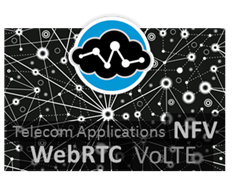
With the LTE World Summit coming up next week, there will be much discussion about voice and video over LTE as well as voice and video over WiFi. I’ll be writing some blogs about those topics in the weeks to come.
There is no doubt that voice and video over LTE and WiFi is increasingly emerging; however, it’s important to remember that the world is not still just a bubble of LTE networks. That is, if you want to place a call from an LTE network to a 3G network, signaling conversion must still take place (see my last blog for more on this).
But media conversion also plays a role in converting HD Voice or video codec to those codecs that are used in 3G networks. A media server will be required to perform this task. Additionally, we will likely begin to see WebRTC endpoints entering the picture soon, as WebRTC uses different voice and video codecs—Opus and VP8/VP9, respectively). Again, transcoding will be required to complete these kinds of calls.
Beyond connecting calls to different networks, messaging and more complicated value added services will also require media servers. For instance, when leaving a voice mail, a media server will be required to handle the HD Voice component. IVRs that talk to you will want to be able to talk in HD voice formats so that you receive the same voice experience as you would from a regular call.
For more complicated services, such as conferencing, a media server will be required to mix the media streams together. And think about a conference call in which participants are dialing in through a number of networks (i.e. LTE, WiFi, 3G and landline). Mixing these different types of voice and media streams will require transcoding and, therefore, a media server.








